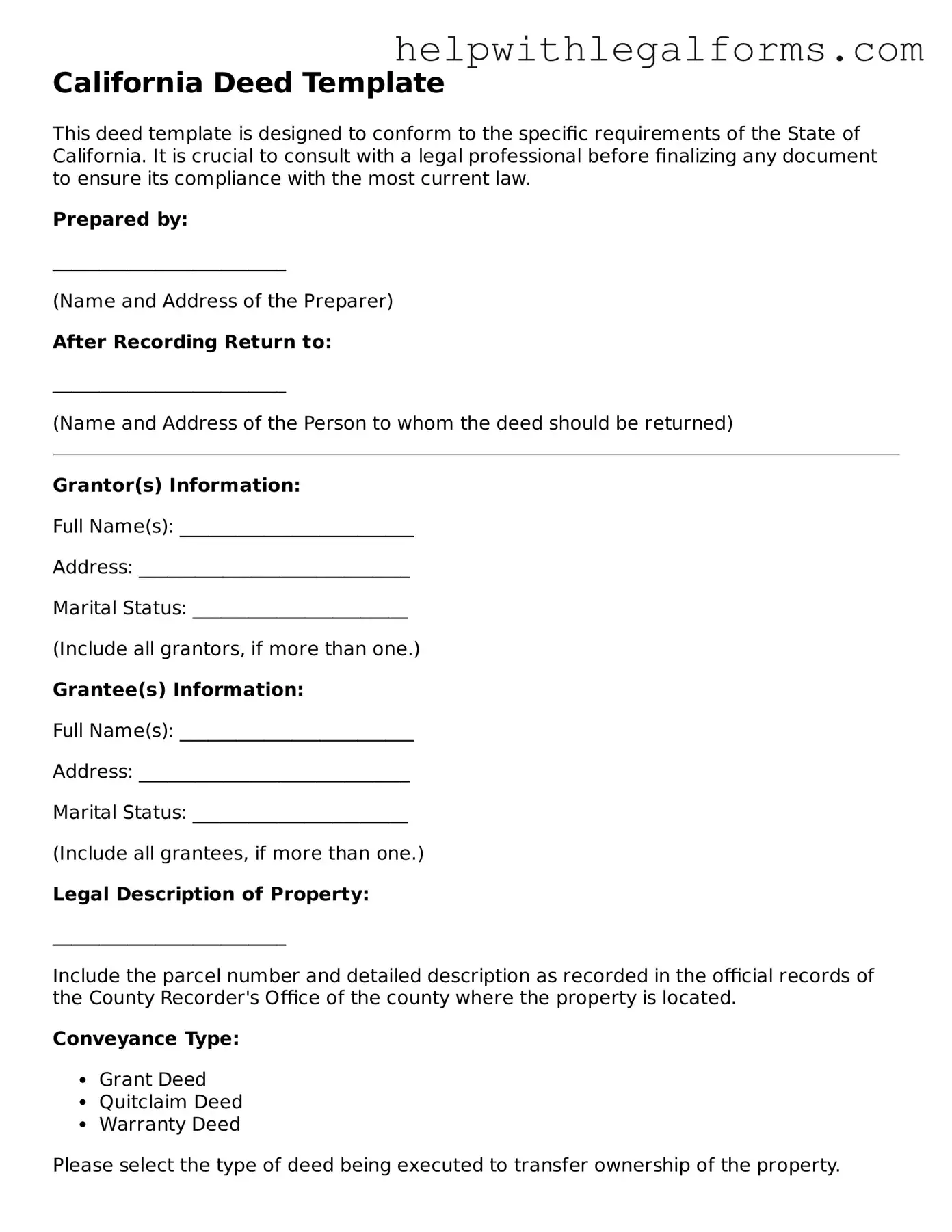California Deed Template
This deed template is designed to conform to the specific requirements of the State of California. It is crucial to consult with a legal professional before finalizing any document to ensure its compliance with the most current law.
Prepared by:
_________________________
(Name and Address of the Preparer)
After Recording Return to:
_________________________
(Name and Address of the Person to whom the deed should be returned)
Grantor(s) Information:
Full Name(s): _________________________
Address: _____________________________
Marital Status: _______________________
(Include all grantors, if more than one.)
Grantee(s) Information:
Full Name(s): _________________________
Address: _____________________________
Marital Status: _______________________
(Include all grantees, if more than one.)
Legal Description of Property:
_________________________
Include the parcel number and detailed description as recorded in the official records of the County Recorder's Office of the county where the property is located.
Conveyance Type:
- Grant Deed
- Quitclaim Deed
- Warranty Deed
Please select the type of deed being executed to transfer ownership of the property.
Consideration:
The total amount of money being exchanged for the property is: $__________.
This amount represents the fair market value of the property or the actual consideration agreed upon by both parties.
Assessor's Parcel Number (APN):
_________________________
This number is critical for the identification of the property in state records and must be included in the deed.
Execution Date:
_________________________
This is the date on which the grantor(s) sign the deed, effectively transferring ownership.
Signatures:
The deed must be signed by all parties involved, in the presence of a notary public. The notary will acknowledge the deed with an official seal and signature, which is essential for the document to be legally binding and recorded properly.
Please ensure that the deed complies with all relevant sections of the California Civil Code and any additional requirements specific to the county in which the property is located.
State of California
County of ________________
On this day, _______________ (date), before me, ______________________ (name of notary), a Notary Public in and for said state, personally appeared _______________________, known to me (or satisfactorily proven) to be the person(s) whose name(s) is/are subscribed to the within instrument and acknowledged that he/she/they executed the same for the purposes therein contained.
In witness whereof, I hereunto set my hand and official seal.
_________________________ (Notary Signature)
Notary Public for the State of California
My Commission Expires: _______________
